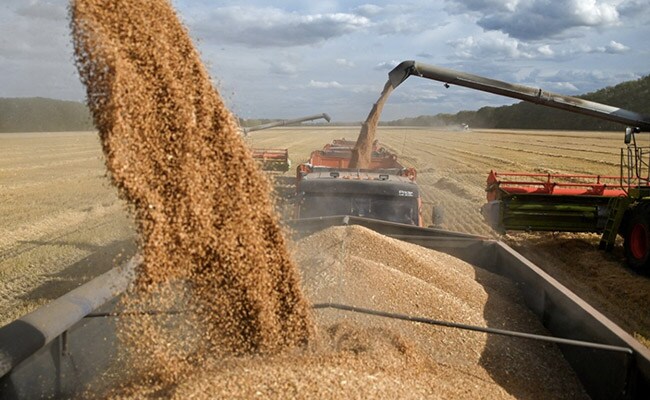More than half of U.S. winter wheat throttled by drought
By Mathew Weaver
More than half of the U.S. winter wheat crop is threatened by drought conditions, and farmers in wheat-growing regions worldwide face a similar scenario, according to U.S. Wheat Associates, the overseas marketing arm for the industry.
About 52% of U.S. winter wheat is currently in drought, compared to 16% in June, said Steve Mercer, U.S. Wheat vice president of communications.
Conditions were dry from 2021 to 2023, but improved for the 2024 crop.“When we look ahead to 2025 now, those dryness concerns are starting to pick up again,” Mercer said.
Nearly all other wheat-exporting countries — Russia, Canada, Argentina and Kazakhstan — also appear to be dry, he said.
Australia is about normal after several years of above-average rain, Mercer said.“We’ve got to keep watching the weather throughout the world,” Mercer said. “We’re in a very dry period again, which is discouraging in terms of production. It’s just something everybody’s going to have to watch.”
For the Pacific Northwest, the USDA National Agricultural Statistics Service’s weekly crop progress report for the week ending Oct. 27 ranks 6% of Idaho’s wheat crop as excellent, 40% as good, 52% as fair and 2% as poor.
In Oregon, 16% of winter wheat is excellent, 44% is good, 28% is fair, 9% is poor and 3% very poor.
Washington’s winter wheat crop is 8% excellent, 41% good, 29% fair, 15% is poor and 7% very poor.

Price impact
As of Monday, soft white wheat ranged from $5.90 to $6 per bushel on the Portland market.
Overall global wheat supplies and U.S. ending stocks are “fairly high,” Mercer said.“There’s sufficient supplies of wheat in the world, and specifically in exporting countries, which tends to be the market mover,” he said. “That’s why we continue to see some pressure on prices.”
Elsewhere in the U.S
Mercer cites concerns in the Plains — “they’re basically seeding into the dust and hoping it comes up.”
It’s unknown whether farmers have cut back on planting wheat because of the dry conditions, he said. Farmers in the Plains have fewer crop choices.
Farmers farther north, in the Dakotas, also have dry conditions, but could elect to raise corn, soybeans or pulses.“What is their choice going to be, we don’t know yet, in terms of planted area for winter wheat,” Mercer said. “The dry conditions are going to impact planting at some level, but we don’t know yet exactly what that’s going to be.”
Drought in Russia, too
Early USDA forecasts for Russia were high, about 90 million metric tons, but dropped to about 82 million metric tons for the 2024 crop.
“But then you look at 2025 and it has been dry, similar dry conditions for seeding there,” Mercer said. “They’ve lowered a forecast down to 81.5 million metric tons.”
That’s still a lot of wheat, Mercer noted. The U.S. produces between 45 million and 50 million metric tons.“But it’s lower than people might expect,” he said. “So that’s something to watch.”The market has “baked in” war concerns, the supply situation and news about dryness, Mercer said.
“When you look at hard red winter wheat specifically, it’s volatile within a range, but it’s trending sideways right now,” he said. “The market is not being dramatically affected by these dry conditions. But it’s something to watch.”
White wheat exports up
Protein is in a normal range this year for soft white wheat and club wheat primarily grown in the Pacific Northwest, Mercer said. The average protein is lower than last year, due to more moisture and cooler weather during kernel development.
Average protein in the 2024 crop is 9.2% compared to 11.1% in 2023 and a five-year average of 10.3%.
This year’s soft white wheat crop has low to medium gluten strength and finished product characteristics are acceptable to good.
“So, lower average protein but with typical functional characteristics,” Mercer said.
White wheat commercial export sales, of which more than 99% is soft white and club, are up, reflecting good performance, larger supplies and competitive prices, Mercer said.
This article has been republished from The Capital Press.

